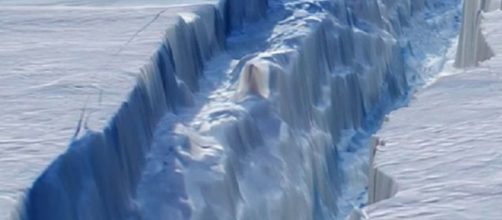A crack in the Antarctic ice shelf is growing at an accelerated rate with scientists reporting a chunk bigger than Rhode Island and almost the size of Delaware possibly breaking away as soon as later this winter. This 2,000 square miles breaking off this shelf would dramatically change the Antarctic Peninsula.
Crack has grown 11 miles since December
The crack is not just growing by inches or feet, it has grown 11 miles in length since the beginning of December and earlier this year it extended another 13 miles across the shelf. The crack has grown 50 miles since 2011, but as you can see by the latest reports on its growth, the rate has become astronomical with almost half of that 50 miles occurring within the last year.
100 miles long
In all this crack extends almost 100 miles, and the width of the crack has grown to "well over 1,000 feet." All that is left connecting the chunk that is breaking off of the Antarctic ice shelf is "12 miles of ice." This crack could cross that 12 miles of ice sometime before the end of winter, setting the 2,000 square mile ice chunk free from the Antarctic ice shelf.
Biggest ever recorded
The scientists keeping tabs on this crack are from a project called MIDAS. This is funded by a British government collaboration which is based out of both the Swansea and Aberystwyth Universities in Wales. The fast warming Antarctic Peninsula has already seen two other shelves within the same region break off.
If this chunk of ice lets go, it will be the biggest ever recorded.
According to The Washington Post, it is widely believed that climate change is the reason this Delaware-sized chunk is separating from the shelf. If this huge chunk of ice does separate from the ice shelf it could "accelerate further breakup of the Antarctic ice shelf."
Ocean water will rise
The piece of ice that is in danger of breaking off acts like a "cork" that keeps the glaciers in Antarctica from flowing into the ocean.
The scientists believe the sea water rising by as much as 4-inches (or 10 centimeters) could be one of the long-term effects of this 2,000 square miles of ice being set free. According to what the Washington Post reports, the chance of this ice chunk breaking off from the Antarctic ice shelf is looking rather "imminent."

